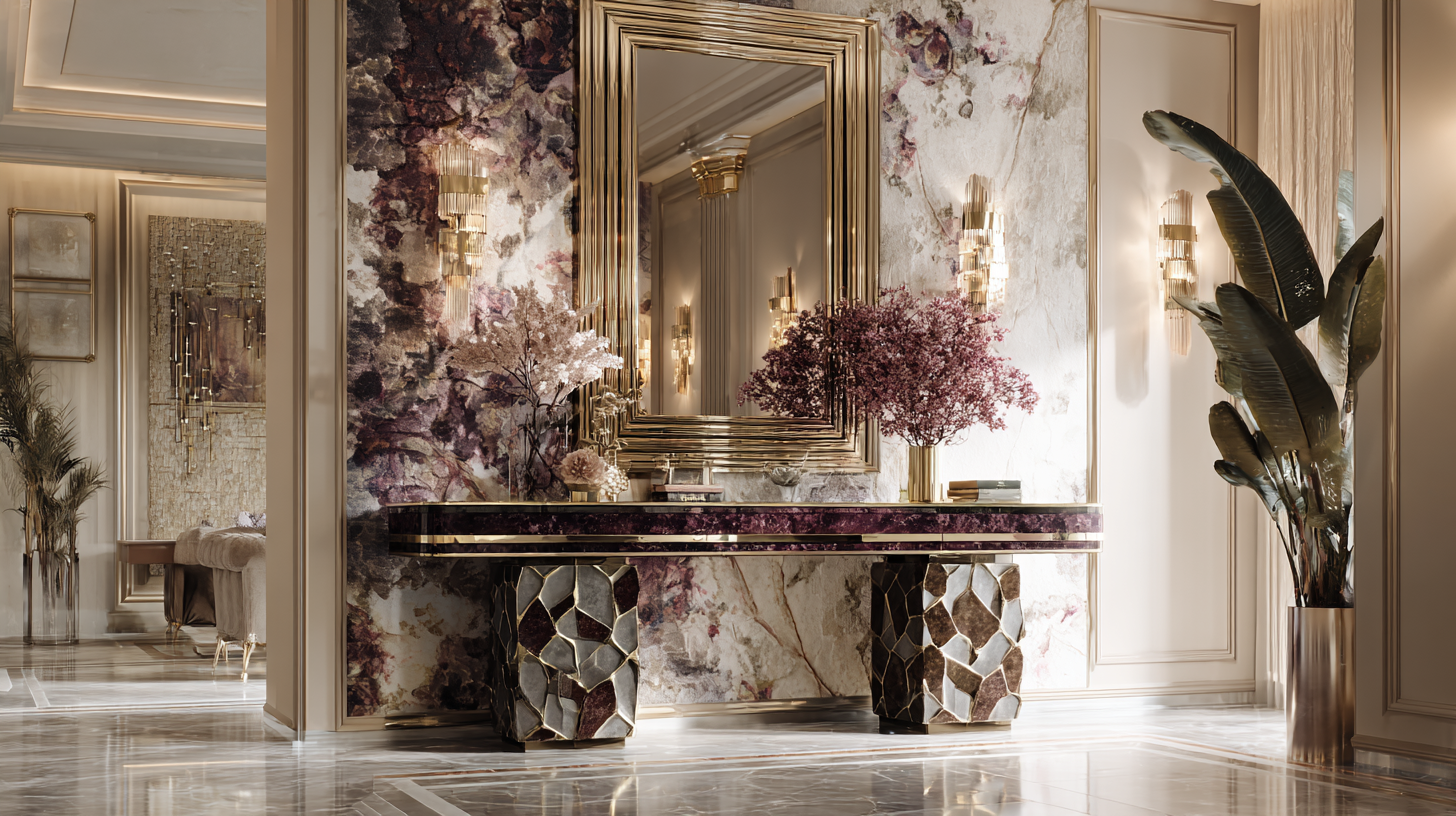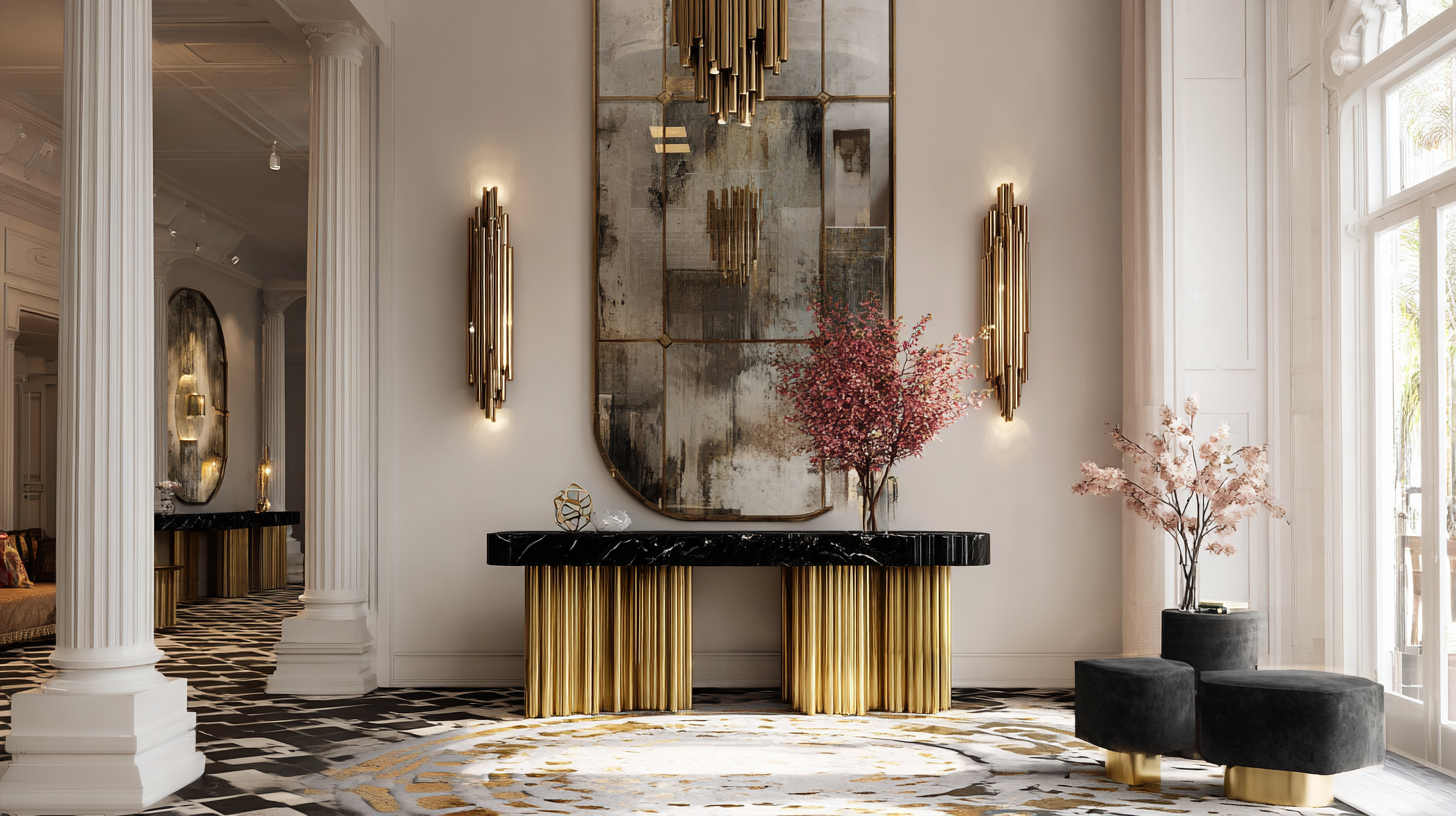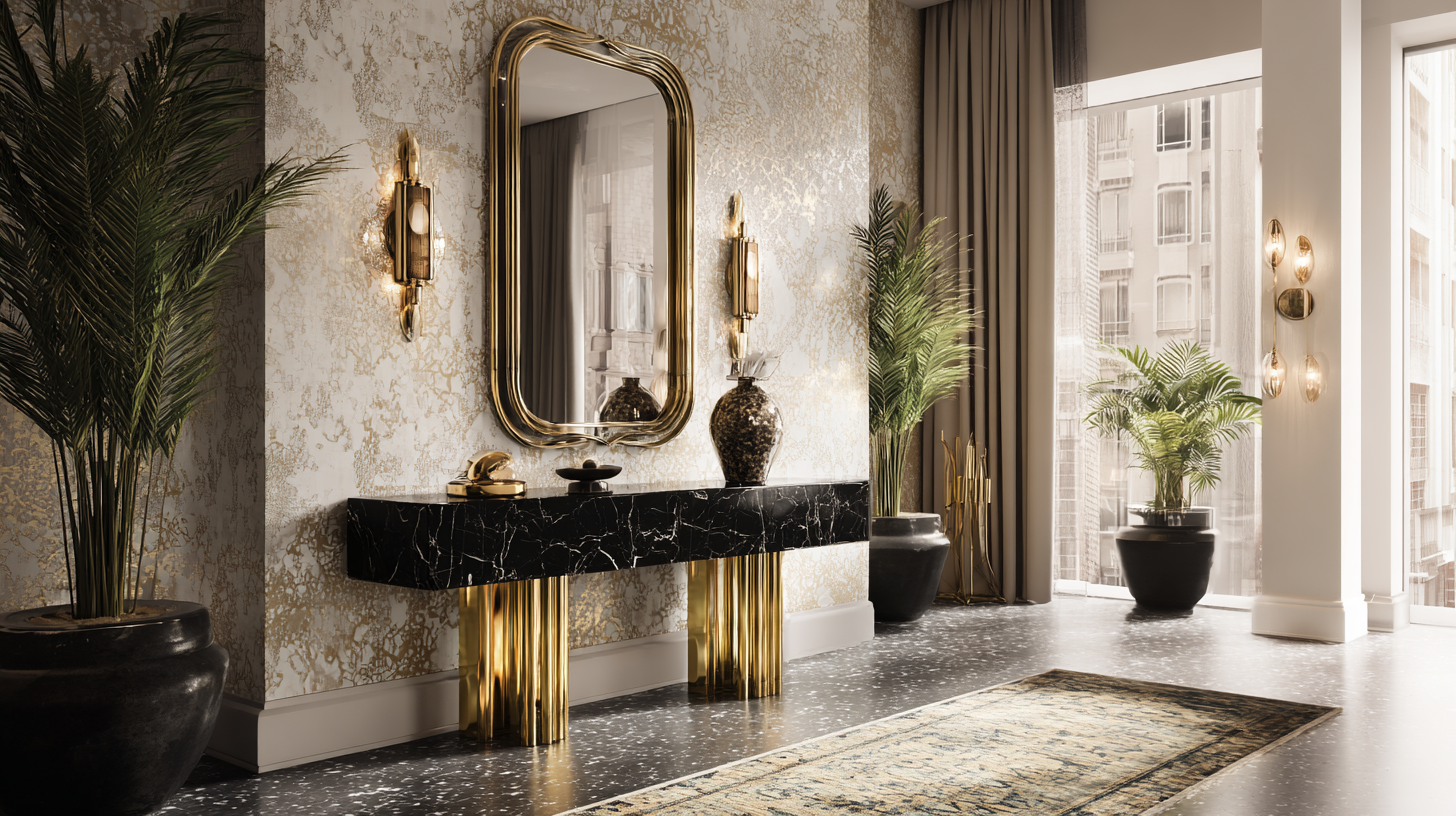As we look ahead to 2025, the world of home decor is poised for exciting transformations, particularly in the realm of hallway tables. According to a recent report by the Home Furnishings Association, the furniture market is expected to reach $227 billion in revenue by 2025, with a significant segment of that growth driven by innovative designs in functional furniture. Hallway tables, often overlooked, are becoming integral to modern interiors—serving as not just decorative elements but also practical storage solutions. With increased consumer interest in multi-functional home furnishings, the demand for stylish yet versatile hallway tables is on the rise. This blog will delve into the emerging trends and design solutions that will redefine hallway tables, positioning them as focal points in the aesthetic and functional landscapes of our homes.

As we look toward 2025, innovative materials are set to revolutionize the design of hallway tables, pushing the boundaries of both functionality and aesthetics. Sustainable materials will take center stage, with bamboo and reclaimed wood gaining popularity due to their environmental benefits. These materials not only contribute to a more eco-friendly home but also add a unique, organic touch to hallway decor.
Another exciting trend is the use of high-tech materials, such as carbon fiber and smart glass. These advanced options offer durability and a sleek, modern look. Smart glass, in particular, can change opacity at the touch of a button, allowing homeowners to customize their hallway space according to their mood and lighting needs.
**Tips:** When selecting a hallway table in 2025, consider pieces that feature layered textures and mixed materials to create visual interest. Look for designs that incorporate integrated storage solutions, ensuring that your hallway is both stylish and practical. Lastly, prioritize sustainability by choosing products made from recycled or responsibly sourced materials, enhancing your decor while caring for the planet.
As we look towards 2025, the color palettes for hallway tables are set to embrace bold and inviting themes that resonate with contemporary aesthetics. According to a recent report by the Interior Design Society, 68% of designers predict an increase in the use of earthy tones and vibrant accents to create a welcoming entryway. Colors such as terracotta, deep navy, and warm olive green are expected to dominate selections, offering both elegance and warmth that perfectly complement current design trends.
When selecting a color palette for your hallway table, consider how it aligns with the overall theme of your home. For a cohesive look, choose colors that harmonize with the hallway's existing decor, creating a fluid transition from room to room. Additionally, integrating textures through various materials like wood and metal can enhance the color choices, adding depth and interest.
Tip: To elevate your hallway table design, experiment with layered accessories in complementary shades. For instance, a terracotta vase paired with a navy table runner can create a striking focal point. Remember to keep your table functional—using colors that evoke a sense of tranquility can set a positive tone as soon as you enter your home.
As we look ahead to 2025, the concept of
functional elegance in home decor,
particularly in hallway tables, is set to redefine modern interiors. The emerging trend emphasizes multi-use
designs that seamlessly blend aesthetics with practicality. Hallway tables
are no longer mere surfaces for decor; they now serve multiple purposes, catering to the needs of contemporary living.
From incorporating storage solutions to acting as a workspace or a charging station, these tables enhance the
functional aspects of home while retaining a sophisticated appearance.

As we move towards 2025, the emphasis on sustainability in home decor cannot be overstated. The hallway table, often an overlooked piece of furniture, is set to become a centerpiece of eco-friendly design. Homeowners are increasingly seeking materials that not only look good but also reduce environmental impact. Reclaimed wood, bamboo, and recycled metals are gaining popularity, allowing consumers to make a statement while promoting greener choices. These materials not only contribute to a reduced carbon footprint but also boast unique textures and tones that can elevate the aesthetic of any hallway.

Moreover, design trends are shifting towards multifunctionality, ensuring that hallway tables serve more than just decorative purposes. Designers are creatively incorporating storage solutions made from sustainable resources, offering practicality without sacrificing style. Smart technology integration is another trend, with features like wireless charging stations or energy-efficient lighting options, all crafted from eco-friendly materials. This innovative approach not only enhances usability but also aligns with a sustainable lifestyle, making hallway tables a reflection of a conscientious home environment. Embracing these eco-friendly designs in 2025 can result in spaces that are both stylish and aligned with our growing commitment to sustainability.
As we venture into 2025, the concept of home decor has been transformed by the integration of smart technology, particularly in seemingly mundane spaces like hallways. Hallway tables, once solely functional, are now evolving into multifunctional smart furniture that complements our daily lives. Imagine a hallway table equipped with sensors that can track your daily routine, reminding you of your schedule while seamlessly charging your devices. This thoughtful integration of technology suggests that our homes will not only look aesthetically pleasing but will also enhance our overall living experience.
Samsung's vision of a smart home emphasizes simplicity and seamlessness, demonstrating that future technologies will be user-friendly rather than complicated.
As the demand for sustainable solutions increases, this approach aligns perfectly with the need for eco-conscious living spaces. Hallway tables can easily become hubs of smart home management, controlling lighting, monitoring air quality, and even providing security alerts. The focus is on creating a harmonious balance between functionality, style, and sustainability, ensuring that every piece of furniture contributes to a smarter, more efficient home environment.
